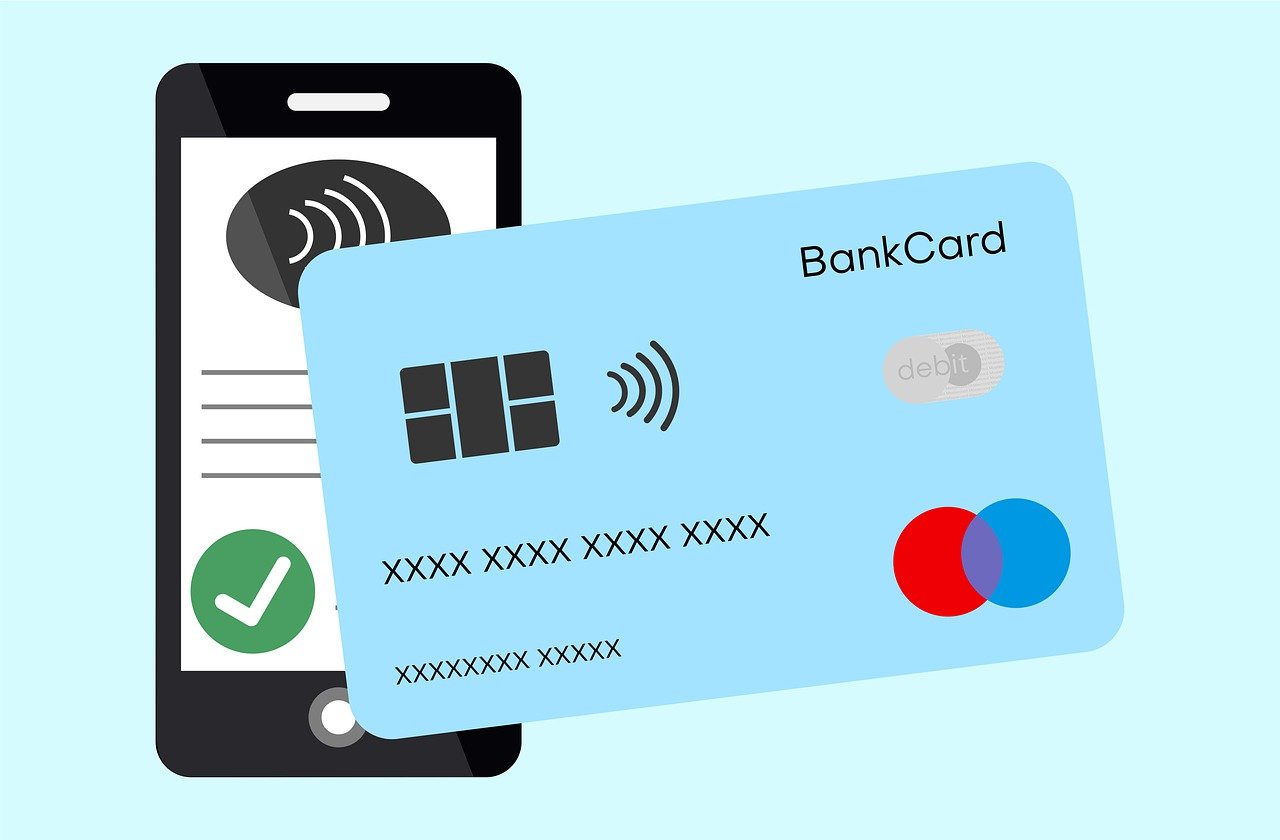In the complex world of finance, banks are facing challenges from rapidly developing technologies, rising customer expectations and increased competitive pressure. An effective marketing strategy is essential not only to retain existing customers, but also to attract new ones. The high regulatory requirements for banks and the digital revolution require innovative solutions that need to be communicated through targeted and strategic marketing.
In this blog post, we look at four successful marketing strategies for banks, from mobile banking innovation to customer loyalty and marketing automation. We show you how these approaches help banks to compete in a constantly changing environment and gain the trust of customers in the long term.
Strategy 1: Mobile banking innovation
Having an overview of your finances at all times and from anywhere: Mobile banking has fundamentally changed the way people manage their finances and is now indispensable. With the ability to conduct banking transactions via smartphones and tablets, customers are no longer tied to physical branches and can conveniently manage their financial transactions themselves. This has led to a faster, simpler and more efficient banking experience. It is clear that hardly any bank can be successful today without mobile banking. The development of a clear mobile banking strategy is therefore essential. It enables banks to extend their services to mobile platforms, allowing customers to access their financial transactions anytime, anywhere. To successfully implement mobile banking, banks should develop user-friendly apps that enable secure and seamless interaction. However, there are many things to consider.

Successful mobile banking app
Developing and operating a mobile banking app requires careful consideration and attention to various aspects. There are numerous points that need to be considered when developing and operating a mobile banking app. We have summarised the most important points for you here:
- Security: Security aspects are a top priority for banks. Implement robust security measures such as two-factor authentication, end-to-end encryption and biometric recognition.
- Data protection: Observe strict data protection guidelines and ensure the secure handling of users' personal data. Inform your users about your privacy policy and give them the opportunity to manage their data themselves.
- User-friendliness: The design should not only be user-friendly and intuitive, but also offer an aesthetically pleasing presentation. This not only enables smooth navigation, but also creates a positive overall impression for users.
- Cross-platform compatibility: Develop the app to work smoothly on different operating systems such as iOS and Android.
- Performance: The app should work quickly and efficiently to ensure a positive user experience. It is also important to note that additional server capacity must be available and should be provided during peak times.
- Offline availability: Implement features that allow users to perform basic tasks even without an internet connection.
- Regulatory compliance: Ensure that the app complies with legal provisions and regulatory requirements in the financial sector. Strict FINMA guidelines apply in Switzerland, which must be observed.
- Testing: Carry out extensive testing with actual users to identify potential bugs and security vulnerabilities before the app is published. Also use testing to better understand user expectations and behaviour and to optimise the app overall.
- Customer feedback: Integrate mechanisms for customer feedback in order to make continuous improvements based on user needs.
- Scalability: Develop the app in such a way that it is easily scalable to cope with a growing number of users.
- Regular updates: Keep the app up to date with regular updates to close security gaps and add new functions.
- Documentation: Create clear and comprehensive documentation for developers and users to keep the application running smoothly.
As you can see, developing the app is not the end of the story. Continuous innovation is required for the success of mobile banking. Banks should therefore keep an eye on trends in mobile technology and offer regular updates in order to remain competitive. Communicating innovations and training customers and employees on new features are also important aspects that need to be considered during implementation. Finally, data security should be a top priority and banks must implement robust security measures to maintain customer trust.
Strategy 2: Strong customer loyalty programme
Money transactions are trust transactions. Banks usually have to earn the loyalty and trust of their customers through time-consuming and complex processes. A strong customer loyalty programme is therefore crucial in the financial sector. It's about building a strong emotional bond between the bank and its customers. Below, we show you how customer loyalty works in the digital age and how you can build a successful customer loyalty programme for your bank:
Customer loyalty in the digital age
In the digital age, customer loyalty plays a crucial role for banks. It is important that banks understand that customer loyalty is not only based on financial incentives, but also on a holistic customer experience. It is therefore essential to understand the needs and expectations of customers. In the age of digitalisation, customers not only expect smooth online transactions, but also a personalised service. The integration of artificial intelligence and data-based analyses can help to develop tailored offers and recommendations that meet customers' individual needs.
Another aspect is transparent communication. Customers value clear and understandable information about their financial affairs. Banks should find innovative ways to actively involve their customers, be it through regular updates, newsletters or interactive platforms. Furthermore, creating an environment of trust is crucial. Data protection and security are top priorities in order to gain and maintain customer trust. Customer loyalty is often based on trust, and banks should ensure that their digital platforms meet the highest security standards.
Last but not least, banks should be flexible, keep their eyes open and continuously evolve. Customer needs change over time, and successful customer retention requires adapting to these developments. Through constant innovation and a proactive attitude towards change, banks can build and strengthen long-term relationships with their customers.
Best practices for the customer loyalty programme
Now that you understand how customer loyalty works in the digital age, it's important to develop a successful customer loyalty programme. Below we have compiled best practices to help you make your customer loyalty programme a success
Define clear objectives:
Before launching a customer loyalty programme, it is crucial to define clear objectives. Do you want to increase customer loyalty, increase average sales or introduce new products? By setting precise objectives, you can measure the success of the programme and make adjustments if necessary.
Personalised offers and rewards:
The importance of personalisation cannot be overstated. Use customer data to create personalised offers and rewards. This can range from customised financial advice to exclusive offers and special loyalty rewards. The more personalised the rewards, the stronger the customer loyalty.
Multi-channel integration:
Integrate the loyalty programme seamlessly into different channels, be it mobile apps, online platforms or traditional shops. Customers should have the freedom to use the programme on their preferred channel. A consistent experience across different touchpoints promotes customer loyalty.
Clear communication and transparency:
Communicate the benefits of the customer loyalty programme clearly and transparently. Explain to customers how they can participate, what rewards they can expect and how the programme will improve their financial experience. Transparency creates trust and motivates participation.
Continuous monitoring and adjustment:
Implement continuous monitoring of the customer loyalty programme. Analyse the results, collect customer feedback and be ready to adapt the programme based on the findings. Customer needs change, and a successful programme continuously adapts.
Strategy 3: Marketing automation for banks
Due to the increasing digitalisation and fast pace of the financial sector, it is becoming increasingly important for banks to automate their marketing processes and use marketing automation. Automation makes it possible to efficiently create and automatically send personalised content based on individual customer behaviour. By segmenting customers, banks can develop customised offers and carry out targeted campaigns, which increases customer loyalty and sales. Marketing automation can therefore be a great support in implementing the customer loyalty programme already explained. Below we show you important areas of application for banks.
- Personalised email campaigns:
Marketing automation can be used to create automated email campaigns. Personalise content, offers and call-to-actions based on customer behaviour. For example, you can automatically send emails with relevant financial products to a customer segment that has carried out certain transactions. - Lead nurturing:
Another application example is lead-nurturing campaigns. Here, potential customers are segmented and relevant information is provided in order to gradually lead the interested parties to further financial services. The customer journey can be personalised and fully automated in order to ultimately acquire the customer. - Landing pages and forms:
Create appealing landing pages and forms with the help of marketing automation programmes. Use these to encourage customers to sign up for webinars, financial advice or other services. - Analyses and reporting:
Use marketing automation as an analysis tool to measure the success of your marketing automation campaigns. Analyse conversion rates, email open rates and other metrics to keep track of the success of marketing automation and continuously optimise its effectiveness.
Strategy 4: Social media for banks
Social media is playing an increasingly important role in how banks communicate and interact with their customers. The successful integration of social media into the marketing strategy requires a great deal of skill. We show you which measures and strategies banks can use to be successful on social media:
A central aspect is the development of appealing and target group-orientated content, be it through informative articles, visually appealing graphics or entertaining videos, in order to convey the bank's message clearly and interestingly and attract the attention of interested parties.
The use of paid advertising on social media platforms is another step to increase reach. Targeted advertising can address specific target groups and increase the bank's visibility. Equally important is the development of communities in which customers can share experiences, be it through the creation of groups or forums. An active community not only promotes customer loyalty, but also enables direct feedback.
Targeted interaction with followers is another important measure for banks. Actively responding to comments, messages and feedback creates trust and signals that the bank is responding to the needs and concerns of its customers. Consistency in the brand presentation on all platforms is equally important to create recognition and strengthen the brand image.
Another approach for banks on social media is to use storytelling elements to tell stories that emphasise the bank's values and mission. Storytelling creates an emotional connection with customers and makes the brand tangible. As visual content is also perceived more quickly and holds users' attention better, the integration of images and videos is crucial to getting the message across.
Overall, the measures mentioned are core elements of an effective social media strategy in bank marketing and should not be neglected. The targeted development of attractive content, paid advertising, community building, interaction with followers and storytelling strengthen the customer loyalty and visibility of every bank.
Conclusion
The successful positioning of a bank in the digital age requires a holistic strategy that takes into account the demands of customers and the challenges of the constantly changing financial sector. The combination of the strategies presented - mobile banking innovation, customer loyalty programmes, marketing automation and social media - is crucial.
It turns out that banks not only need to develop innovative mobile banking apps, but also ensure the highest security standards and make continuous adjustments. A strong customer loyalty programme based on transparency, personalised offers and continuous adjustments creates an emotional bond with customers. The use of marketing automation can support such a customer loyalty programme. In addition, social media offers platforms to interact with customers in real time and strengthen a bank's brand image. A consistent brand presence, appealing content and targeted interaction promote customer loyalty enormously. To summarise, these four strategies form a holistic concept for a bank's success and should be at the forefront of a bank's overall marketing strategy planning.
Do you need support with digital strategy consulting for your bank? Arcmedia has many years of experience in providing digital services such as mobile banking, building customer loyalty programmes and marketing automation for banks. If you want to strengthen your bank for the future, we are happy to help. We look forward to hearing from you contact us!








